What climate change could mean to the future of Mi'kmaw artisanship

Some Mi'kmaw artisans in Nova Scotia have found it particularly hard this year to source traditional materials, such as birch bark for building canoes and wood from the black ash tree used to create baskets.
A big reason for this, according to Mi'kmaw harvesters, is climate change.
The black ash is a threatened species in Nova Scotia due in part to habitat loss, historic overlogging and current forestry practices. But the plan established by the province to help the black ash recover notes that climate change is also a current and future factor, particularly droughts that can lead to "severe dieback."
Changes are also happening with birch trees, known as masgwi in Mi'Kmaw. Winter bark, an outer layer that is harder to peel off, has been found this summer, months earlier than normal. The bark is used for making bowls and containers, but artisans say its quality has been worsening.
Masgwi's winter bark
Cheryl Simone, a Mi'kmaw artisan from Abegweit First Nation in P.E.I., blames the issues she is encountering with birch bark on climate change, which she said is having an impact on harvesting practices in Nova Scotia.
Living in Dartmouth, N.S., she makes quill designs using porcupine quills threaded through birch bark. She said when bark is harvested, it regenerates thicker after several years, and no tree is harvested again until it grows back.
She was hoping to be able to share these teachings with her children, but because the trees aren't recovering like they used to, the practice may be impossible in the future.
"I was really looking forward to being able to take my children back to the tree I've harvested, so that we could have multi-generational relationships with one tree," she said. "And I just don't know if that's going to be possible."
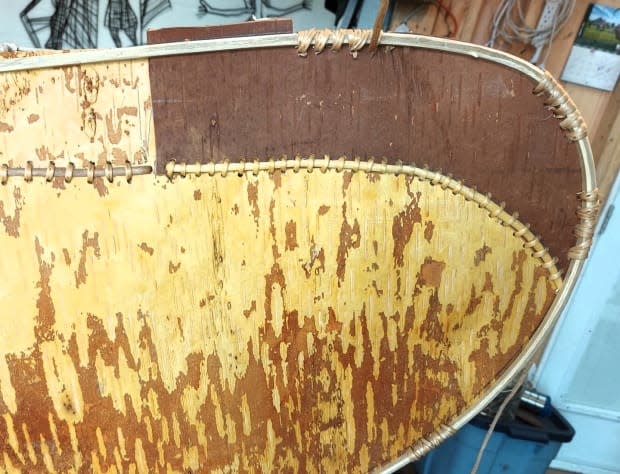
Winter bark is normally found on birch trees from September until May, not in mid-July like this year, according to Todd Labrador, a Mi'kmaw birch bark canoe builder from Acadia First Nation in southern Nova Scotia.
He said he believes the trees are in part reacting to changes in temperature, lack of consistent snowfall, and insects that cause bumps and dark patches in the bark, making it unusable.
He also blames the bark fluctuations on clear cutting that erodes the landscape, which increases runoff and means less water is retained in an area for those trees that remain. In other cases, birch trees are being felled by the increasing number of extreme weather events.
Winter bark is harder to pull from trees than the summer bark that's ideal for canoe making.
"It should be just falling off the tree when you make the cut," said Labrador.
He said he can still use winter bark for areas of the canoe where he wants to etch designs, but this year it is too dry and brittle. He usually harvests summer and winter bark a year in advance for canoe building, but he said over the past 10 years he's been finding more is out of season and of poor quality.
"It's a race against time."
Keeping wisqoq alive
Climate change is causing Nova Scotia winters to become more mild, according to provincial data. The province's Department of Environment and Climate Change says while this may lead to longer growing seasons, those may be offset by warmer summers, more flooding and increased droughts that raise the chances of forest fires.
Birch and ash trees in the province are important to Mi'kmaw culture and traditions, which are passed on with hands-on experience and oral teachings. If the tree species stop being viable, some techniques could be lost.
There were only about 1,000 black ash trees, called wisqoq in Mi'kmaw, known to be left in Nova Scotia, according to the province's 2015 recovery plan. Only 12 were recorded as mature trees that seed every one to eight years.
After the story was published, the province clarified there are 50 known mature trees, a figure that will be reflected in an upcoming recovery plan.
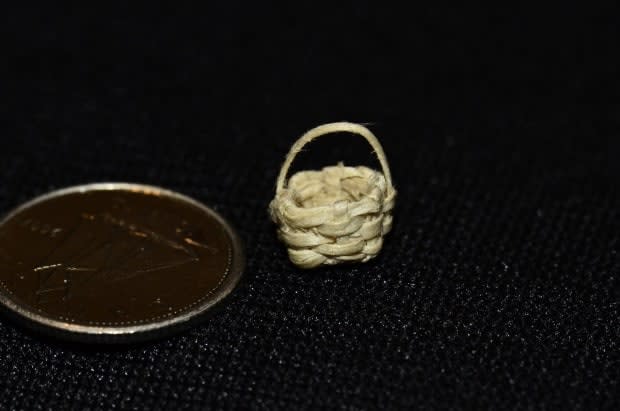
In an email statement, the province's Department of Land and Forestry said the trees that remain are all "small, misshapen and generally of poor health."
Black ash is also susceptible to fungal diseases and poor growth.
Wood from the tree was often used in basket making, but because of its scarcity, most basket makers have moved to white or brown ash.

Virick Charles Francis, a Mi'kmaw basket maker from Eskasoni First Nation, is known for his ability to make baskets as small as a dime.
He said black ash is one of the best materials to use, due to its versatility and the moisture in it that allows the rings to separate easier and split into planks.
"With maple you have to keep splitting the wood continuously until you get narrow planks," he said. "It's a long tedious process."
Francis now uses mostly white ash and black ash sent to him by a friend in Quebec to make his baskets and creations. Some "resilient" basket makers have already begun to experiment with other types of wood.
But he worries the tradition of ash basket making will be lost if the invasive insect known as the emerald ash borer takes hold in Nova Scotia and destroys the trees.
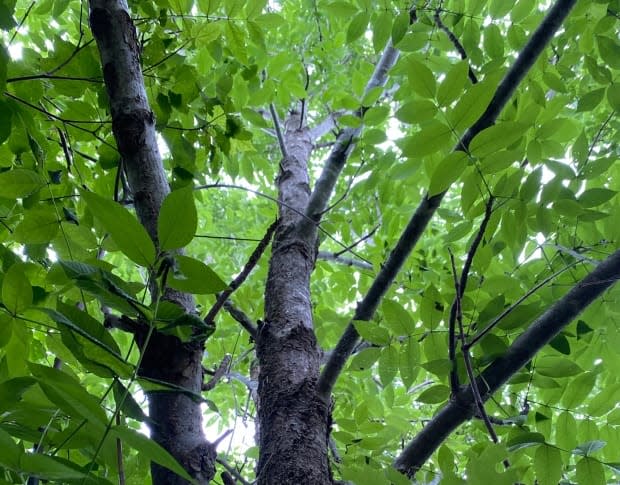
In 2002, the first emerald ash borer was detected in Windsor, Ont. Since then, it has spread east into five provinces. By 2006, it had killed over 50 million ash trees in North America.
The emerald ash borer was spotted for the first time in Nova Scotia in 2018, in the Bedford area of Halifax. Nova Scotia winter temperatures don't drop to the -30 C required to kill it off.
Donnie McPhee, a co-ordinator at the National Tree Seed Centre, a seed bank that works to preserve the genetic diversity of the country's forests, said the beetle has spread far more quickly than it would naturally due to the transport of infected lumber.
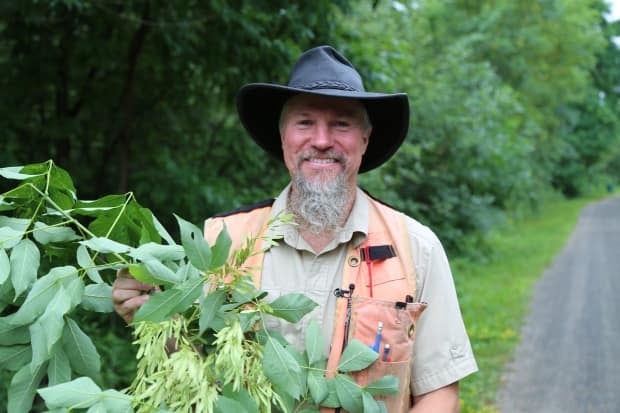
McPhee said it's a matter of when, not if, the beetle makes its way into the province's small black ash population. The problem is exacerbated by Nova Scotia's increasingly mild winters and fewer cold snaps as a result of climate change.
There is currently no known way of stopping the beetle in the province.
Small pockets of black ash trees can be found in quiet wetland areas around the province.
Nick Hill, an ecologist and the operator of Fern Hill Institute of Plant Conservation in Berwick, N.S., has been involved in studies to do with black ash trees for a number of years. He said originally he did work on the Wildcat Reserve, which is part of Acadia First Nation, to identify black ash on the Wildcat River.
Recently, he has been doing work with Nova Scotia's Department of Transportation to see if black ash can be transplanted, because some trees reside in proposed locations for 100-series highway twinning projects.
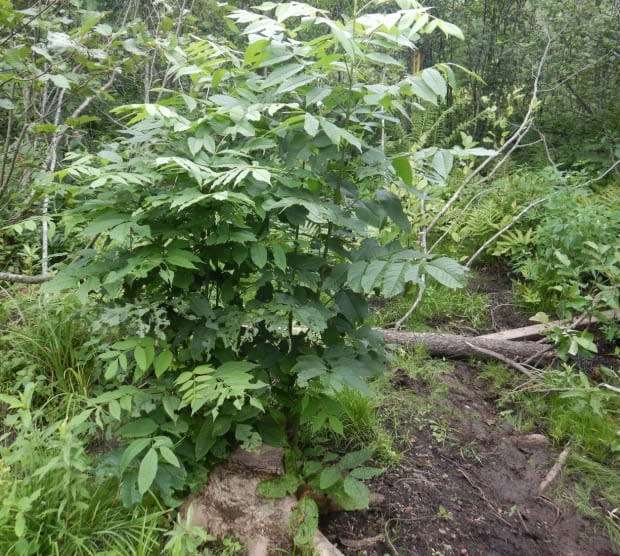
"That part is more to see if the trees can be moved rather than saying that this transplantation is going to save those trees," he said. "Monitoring black ash is ongoing."
So far, the black ash that has been moved has survived.
However, Hill believes transplantation should only be used as a last resort because it doesn't make up for the destruction of the original habitat.
Hill said he hasn't yet come across the emerald ash borer in any of the trees he has tested, but because it's already established in Bedford it's only a matter of time.
"We can think that emerald ash borer will be a problem to the white ash and the black ash in the next decade," he said.
New approaches
Elizabeth Jessome, the Mi'kmaw forestry initiative project manager with the Unama'ki Institute of Natural Resources, said in an email the institute has been working closely with provincial departments and organizations to help conserve black ash in the province.
She said they have also been working with forestry workers to raise awareness about the tree. They hope is that if skilled workers can recognize the trees in the field, "new trees can be identified and protected."
Jessome said they are also working closely with the Department of Lands and Forestry to potentially grow black ash in a controlled setting for its protection.
"We have all been discussing the idea of establishing a black ash seed orchard as well," she said.
MORE TOP STORIES

